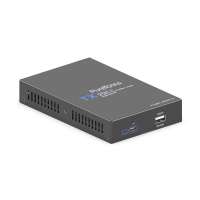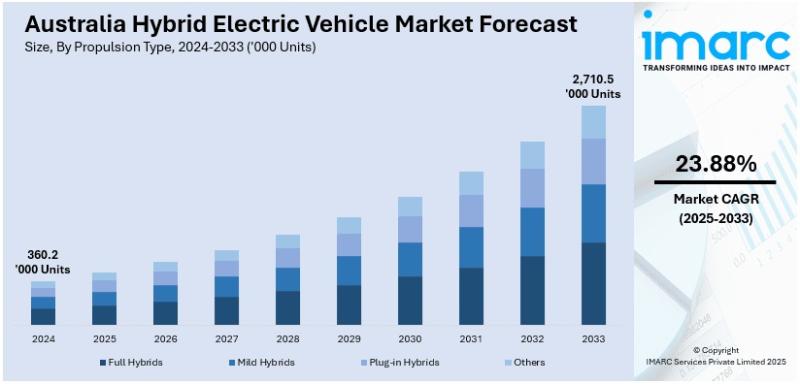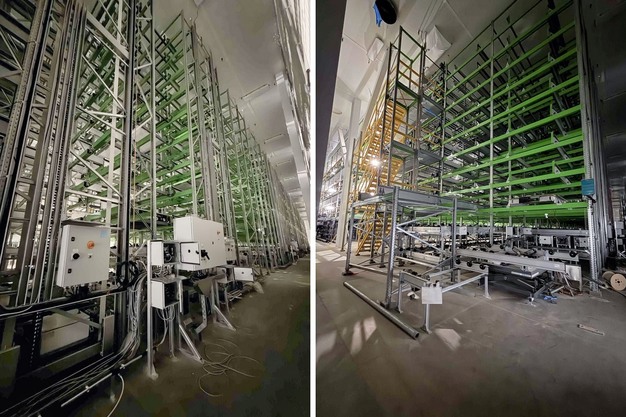New transmitter could make wireless devices more energy-efficient – MIT News

Report on a Novel Energy-Efficient Transmitter and its Alignment with Sustainable Development Goals
Executive Summary
A collaborative research effort by institutions including MIT has resulted in the development of a novel transmitter chip that significantly enhances the energy efficiency and reliability of wireless communications. This innovation directly supports key United Nations Sustainable Development Goals (SDGs) by reducing energy consumption, promoting sustainable industrial practices, and building resilient infrastructure. The technology’s compact and adaptable design allows for immediate integration into existing Internet of Things (IoT) devices and provides a foundation for future 6G communication standards.
Technological Innovation: Optimal Modulation for Enhanced Efficiency
The core of the innovation lies in a unique approach to wireless signal modulation, which deviates from traditional, less efficient methods. The system is designed to maximize data transmission while minimizing energy use and transmission errors.
- Optimal Modulation: The transmitter employs a non-uniform modulation scheme that adapts to dynamic wireless channel conditions, optimizing energy usage.
- Error Reduction Technique: To overcome the susceptibility to errors common in optimal modulation, the system adds a small amount of padding (extra bits) to each transmission. This ensures every data packet is the same length, allowing the receiver to more easily distinguish the signal from noise.
- Advanced Decoding: A universal decoding algorithm known as GRAND (Guessing Random Additive Noise Decoding) is used by the receiver to identify and account for the added padding bits, enabling the accurate reconstruction of the original message while retaining the energy efficiency gains.
Performance assessments show the new chip enables transmissions with approximately one-quarter the signal error of other optimal modulation methods and achieves lower error rates than conventional transmitters.
Contribution to SDG 7 (Affordable and Clean Energy) and SDG 12 (Responsible Consumption and Production)
The transmitter’s primary benefit of energy efficiency has a direct and significant impact on sustainability targets related to energy and consumption.
- SDG 7: Affordable and Clean Energy: By drastically lowering the energy required for wireless communication, the technology promotes more efficient energy use across a vast ecosystem of connected devices. This reduces the overall strain on power grids and supports the transition to more sustainable energy consumption patterns.
- SDG 12: Responsible Consumption and Production: The improved energy efficiency leads to extended battery life in portable devices. This reduces the frequency of charging and battery replacement, thereby conserving resources and minimizing electronic waste, a key target for sustainable consumption.
Bolstering SDG 9 (Industry, Innovation, and Infrastructure) and SDG 11 (Sustainable Cities and Communities)
The reliability, versatility, and efficiency of the chip make it a critical enabler for building modern, sustainable infrastructure and communities.
- SDG 9: Industry, Innovation, and Infrastructure: The technology is a foundational innovation for next-generation wireless infrastructure, including 6G. Its suitability for industrial sensors that monitor factory conditions enhances the resilience and efficiency of industrial processes, fostering sustainable industrialization.
- SDG 11: Sustainable Cities and Communities: As a power-efficient communication solution, the chip is ideal for a wide range of smart city applications. It can be integrated into smart appliances and large-scale sensor networks, providing the reliable, real-time data connectivity necessary for managing urban resources efficiently and creating more sustainable living environments.
Conclusion and Future Prospects
This innovative transmitter represents a significant advancement in wireless technology, offering a dual benefit of enhanced performance and improved sustainability. The research, a model of partnership under SDG 17 (Partnerships for the Goals), has produced a flexible solution that can immediately improve current systems while meeting the stringent requirements of future communication standards. The technology is poised to play a major role in the development of 6G and next-generation Wi-Fi, driving progress toward a more connected and sustainable future.
Which SDGs are addressed or connected to the issues highlighted in the article?
-
SDG 7: Affordable and Clean Energy
The article’s central theme is the development of a technology that “significantly improves the energy efficiency of wireless communications.” This directly supports the goal of using energy more efficiently, as the chip is designed for “minimizing energy usage” and could “boost the range and battery life of a connected device.”
-
SDG 9: Industry, Innovation and Infrastructure
This goal is highly relevant as the article discusses a technological “innovation” resulting from scientific research. The chip is designed to upgrade communication “infrastructure” (IoT, 6G, Wi-Fi) and has applications in “industry,” such as for “industrial sensors that continuously monitor factory conditions.” The entire article is a showcase of research and development driving technological advancement.
-
SDG 11: Sustainable Cities and Communities
The article connects the technology to urban environments by mentioning its suitability for “smart appliances that provide real-time notifications.” The widespread adoption of such energy-efficient devices in cities would contribute to making urban centers more sustainable by reducing their overall energy consumption.
What specific targets under those SDGs can be identified based on the article’s content?
-
Target 7.3: By 2030, double the global rate of improvement in energy efficiency.
The new transmitter chip is a direct contribution to this target. The article repeatedly emphasizes its primary benefit as improving “energy efficiency” and “minimizing energy usage.” It is presented as a technological solution to make wireless communications more energy-efficient.
-
Target 9.4: By 2030, upgrade infrastructure and retrofit industries to make them sustainable, with increased resource-use efficiency…
The chip is designed to be a “compact, flexible system” that can be “incorporated into existing internet-of-things devices” and meets the “efficiency requirements of future 6G technologies.” This represents an upgrade to communication infrastructure. Its application in “industrial sensors” also points to retrofitting industries with more resource-efficient technology.
-
Target 9.5: Enhance scientific research, upgrade the technological capabilities of industrial sectors… and encourage innovation.
The article is a clear example of this target in action. It details a research project by “researchers from MIT and elsewhere” that led to a “game-changing innovation.” The mention of support from “the U.S. Defense Advanced Research Projects Agency (DARPA), the National Science Foundation (NSF)” underscores the role of investment in scientific research to drive technological progress.
-
Target 9.c: Significantly increase access to information and communications technology…
While not the primary focus, the technology’s ability to “boost the range” of connected devices and provide “more reliable communications” contributes to improving and extending communication infrastructure. More efficient and reliable technology can make it easier and more affordable to expand network access.
Are there any indicators mentioned or implied in the article that can be used to measure progress towards the identified targets?
-
Implied Indicator for Targets 7.3 & 9.4: Improvement in Energy Efficiency and Reliability
The article provides qualitative and quantitative data points that serve as indicators. It states the new chip enabled transmissions with “only about one-quarter the amount of signal error,” which is a direct measure of improved reliability and efficiency. The core claim of “significantly improves the energy efficiency” and “minimizing energy usage” serves as a primary, albeit non-standardized, indicator of progress.
-
Direct Indicator for Target 9.5: Investment in Research and Development (R&D)
The article explicitly states that “This work is supported, in part, by the U.S. Defense Advanced Research Projects Agency (DARPA), the National Science Foundation (NSF).” This mention of funding from national research agencies is a direct indicator of investment in R&D to foster innovation.
-
Implied Indicator for Target 9.c: Enhanced Network Performance
The article mentions that the technology could “boost the range… of a connected device.” The measurement of increased signal range and the reduction in transmission error (“lower error rates”) can be used as indicators for the quality and reach of communication infrastructure, which is essential for increasing access.
SDGs, Targets and Indicators Analysis
| SDGs | Targets | Indicators |
|---|---|---|
| SDG 7: Affordable and Clean Energy | Target 7.3: Double the global rate of improvement in energy efficiency. | Improved energy efficiency of wireless communications, leading to “minimized energy usage” and longer “battery life of a connected device.” |
| SDG 9: Industry, Innovation and Infrastructure | Target 9.4: Upgrade infrastructure and retrofit industries to make them sustainable. | Development of efficient technology for upgrading communication infrastructure (IoT, 6G) and for use in “industrial sensors.” |
| Target 9.5: Enhance scientific research and upgrade technological capabilities. | Investment in scientific research from institutions like “DARPA” and “NSF” leading to a “game-changing innovation.” | |
| Target 9.c: Significantly increase access to information and communications technology. | Increased reliability (“only about one-quarter the amount of signal error”) and ability to “boost the range” of wireless communications. | |
| SDG 11: Sustainable Cities and Communities | Target 11.6: Reduce the adverse per capita environmental impact of cities. | Application in energy-efficient “smart appliances,” contributing to reduced energy consumption in urban environments. |
Source: news.mit.edu

What is Your Reaction?
 Like
0
Like
0
 Dislike
0
Dislike
0
 Love
0
Love
0
 Funny
0
Funny
0
 Angry
0
Angry
0
 Sad
0
Sad
0
 Wow
0
Wow
0



























































.jpg?#)

















